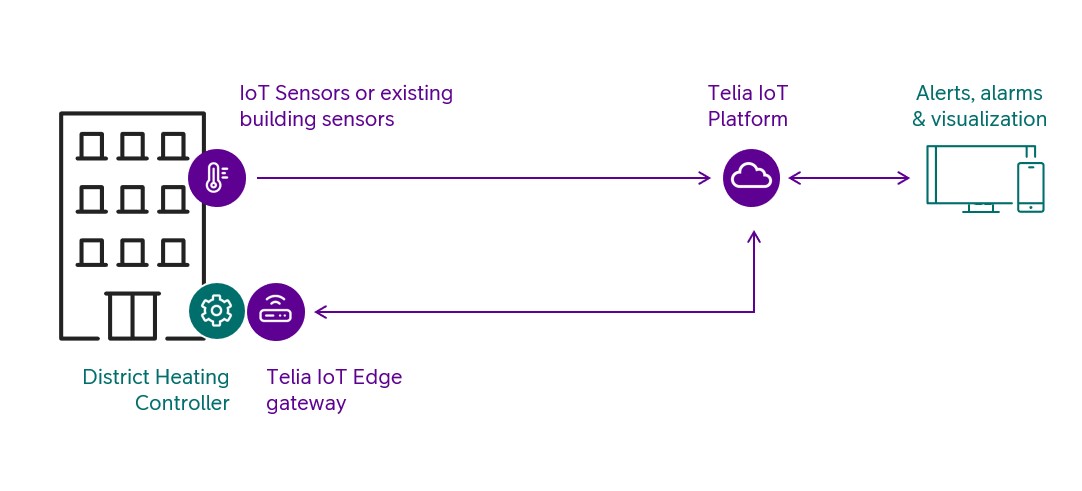Heating Optimization provides energy savings for housing cooperatives
Since Telia launched Heating Optimization last year, there’s been great interest in its energy optimization capabilities from the owners of large buildings. But it is clear that smaller housing cooperatives benefit from the solution as well. Here, we show some of the results.
Telia launched Heating Optimization in November, 2022.
Buildings account for a large part of the energy consumption in cities. So, the demand to optimize energy consumption is clear. Furthermore, the real estate industry is highly affected by high energy prices, inflation and interest rates. In the cold, energy-intense climate of Northern Europe, it is therefore perhaps an even bigger priority to find new ways to increase energy efficiency and reduce consumption – and especially for the smaller building owners where the increased costs hit the hardest.
During the winter, Telia and two tenant-owned housing cooperatives investigated how to optimize the usage of district heating. One cooperative is located in the Stockholm region and owns three buildings with 59 apartments, and the other is based in Värmland and owns two buildings with 36 apartments.
The two cooperatives connected the buildings by installing IoT (Internet of Things) sensors in each apartment to measure temperature and humidity. These provide real-time temperature data to an IoT-connected control unit that regulates the flow of hot water into the building from district heating. This enables the district heating to be optimized according to the actual indoor temperature to prevent energy wastage and avoid temperature fluctuations that can affect tenant comfort. This provides a far more accurate and responsive way of regulating hot water intake than the previous solution which was based on a fixed curve that didn’t take fluctuations of weather or actual indoor temperature into account.

By using Telia Heating Optimization, the housing cooperatives were able to reduce energy consumption by between 5-10 percent during the first winter months. They were also able to provide more evenly regulated temperature and indoor comfort for tenants.
Furthermore, by getting real data insights from each apartment’s temperature and humidity data, other important findings were made. These include identifying energy wastage due to faulty balcony doors, poorly working thermostats and warm water leakages – areas that have now been fixed.
Read more about Heating Optimization here.
Cookie notification
Cookies allow us to optimize your use of our website. We also use third-parties cookies for advertising and analytics. Please read our Cookie Policy for more information.

